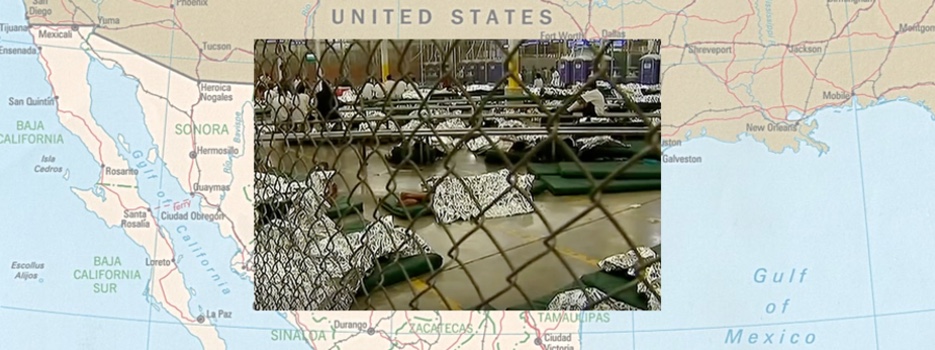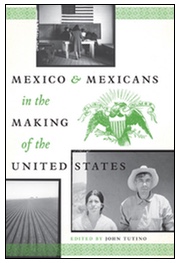Mexicans Made America—Why Do We Treat Them Like Alien Invaders?

Mexicans have contributed to making the United States in pivotal and enduring ways. In 1776, more of the territory of the current United States was under Spanish sovereignty than in the 13 colonies that rejected British rule. Florida, the Gulf coast to New Orleans, the Mississippi to St. Louis, and the lands from Texas through New Mexico and California all lived under Spanish rule, setting Hispanic-Mexican legacies. Millions of pesos minted in Mexico City, the American center of global finance, funded the war for U.S. independence, leading the new nation to adopt the peso (renamed the dollar) as its currency.
 The U.S. repaid the debt by claiming Spanish/Mexican lands—buying vast Louisiana territories (via France) in 1803; gaining Florida by treaty in 1819; sending settlers into Texas (many undocumented) to expand cotton and slavery in the 1820s; enabling Texas secession in 1836; provoking war in 1846 to incorporate Texas’s cotton and slave economy—and California’s gold fields, too. The U.S. took in land and peoples long Spanish and recently Mexican—often mixing European, indigenous, and African ancestries. The 1848 Treaty of Guadalupe Hidalgo recognized those who remained in the U.S. as citizens. And the U.S. incorporated the dynamic mining-grazing-irrigation economy that had marked Spanish North America for centuries and would long define the U.S. West.
The U.S. repaid the debt by claiming Spanish/Mexican lands—buying vast Louisiana territories (via France) in 1803; gaining Florida by treaty in 1819; sending settlers into Texas (many undocumented) to expand cotton and slavery in the 1820s; enabling Texas secession in 1836; provoking war in 1846 to incorporate Texas’s cotton and slave economy—and California’s gold fields, too. The U.S. took in land and peoples long Spanish and recently Mexican—often mixing European, indigenous, and African ancestries. The 1848 Treaty of Guadalupe Hidalgo recognized those who remained in the U.S. as citizens. And the U.S. incorporated the dynamic mining-grazing-irrigation economy that had marked Spanish North America for centuries and would long define the U.S. West.
Debates over slavery and freedom in lands taken from Mexico led to the U.S. Civil War while Mexicans locked in shrunken territories fought over liberal reforms and then faced a French occupation—all in the 1860s. With Union victory, the U.S. drove to continental hegemony. Simultaneously, Mexican liberals led by Benito Juárez consolidated power and welcomed U.S. capital. U.S. investors built Mexican railroads, developed mines, and promoted export industries—including petroleum. The U.S. and Mexican economies merged; U.S. capital and technology shaped Mexico while Mexican workers built the U.S. west. The economies were so integrated that a U.S. downturn, the panic of 1907, was pivotal to setting off Mexico’s 1910 revolution, a sociopolitical conflagration that focused Mexicans while the U.S. joined World War I.
Afterwards, the U.S. roared in the 20s while Mexicans faced reconstruction. The U.S. blocked immigration from Europe, and still welcomed Mexicans to cross a little-patrolled border to build dams and irrigation systems, cities and farms across the west. When depression hit in 1929 (it began in New York, spread across the U.S., and was exported to Mexico), Mexicans became expendable. Denied relief, they got one-way tickets to the border, forcing thousands south—including children born as U.S. citizens.
Mexico absorbed the refugees thanks to new industries and land distributions—reforms culminating in the nationalization of the oil industry in 1938. U.S. corporations screamed foul and FDR arranged a settlement (access to Mexican oil mattered as World War II loomed). When war came, the U.S. needed more than oil. It needed cloth and copper, livestock and leather--and workers, too. Remembering the expulsions of the early 30s, many resisted going north. So the governments negotiated a labor program, recruiting braceros in Mexico, paying for travel, promising decent wages and treatment. 500,000 Mexican citizens fought in the U.S. military. Sent to deadly fronts, they suffered high casualty rates.
To support the war, Mexican exporters accepted promises of post-war payment. With peace, accumulated credits allowed Mexico to import machinery for national development. But when credits ran out, the U.S. subsidized the reconstruction of Europe and Japan, leaving Mexico to compete for scarce and expensive bank credit. Life came in cycles of boom and bust, debt crises and devaluations. Meanwhile, U.S. pharmaceutical sellers delivered the antibiotics that had saved soldiers in World War II to families across Mexico. Children lived—and Mexico’s population soared: from 20 million in 1940, to 50 million by 1970, 100 million in 2000. To feed growing numbers, Mexico turned to U.S. funding and scientists to pioneer a “green revolution.” Harvests of wheat and maize rose to feed growing cities. Reliance on machinery and chemical fertilizers, pesticides, and herbicides, however, cut rural employment. National industries also adopted labor saving ways, keeping employment scarce everywhere. So people trekked north, some to labor seasonally in a bracero program that lasted to 1964; others to settle families in once Mexican regions like Texas and California and places north and east.
Documentation and legality were uncertain. U.S. employers’ readiness to hire Mexicans for low wages was not. People kept coming. U.S. financing, corporations, and models of production shaped lives across the border; Mexican workers labored everywhere, too. With integrated economies, the nations faced linked challenges. In the 1980s the U.S. suffered from “stagflation” while Mexico faced a collapse called the “lost decade.” In 1986, Republican President Ronald Reagan authorized a path to legality for thousands of Mexicans in the U.S. tied to sanctions on employers aimed to end new arrivals. Legal status kept workers here; failed sanctions enabled employers to keep hiring Mexicans—who kept coming. They provided cheap and insecure workers to U.S. producers—subsidizing profits in times of challenge.
The 1980s also saw the demise of the Soviet Union, the end of the Cold War, and the presumed triumph of capitalism. What would that mean for people in Mexico and the U.S.? Reagan corroded union rights, leading to declining incomes, disappearing pensions, and enduring insecurities among U.S. workers. President Carlos Salinas of Mexico’s dominant PRI attacked union power—and in 1992 ended rural Mexicans’ right to land. A transnational political consensus saw the erosion of popular rights as key to post-Cold War times.
Salinas proposed NAFTA to Reagan’s Republican successor, George H.W. Bush. The goal was to liberate capital and goods to move freely across borders—while holding people within nations. U.S. business would profit; Mexicans would continue to labor as a reservoir of low wage workers—at home. The treaty was ratified in Mexico by Salinas and the PRI, in the U.S. by Democratic President Clinton and an allied Congress.
As NAFTA took effect in 1994, Mexico faced the Zapatista rising in the south, then a financial collapse—before NAFTA could bring investment and jobs. With recovery, the Clinton era hi-tech boom saw production flow to China. Mexico gained where transport costs mattered—as in auto assembly. But old textiles and new electronics went to Asia. Mexico returned to growth in the late 1990s, with jobs still scarce for a population nearing 100 million. Meanwhile, much of Mexican agriculture collapsed. NAFTA ended tariffs on goods crossing borders. The U.S. subsidizes corporate farmers--internal payments enabling agribusiness to sell below cost. NAFTA left Mexican producers to face U.S. subsidized staples. Mexican growers could not compete and migration to the U.S. accelerated.
NAFTA brought new concentrations of wealth and power across North America. In Mexico, cities grew as a powerful few and favored middle sectors prospered; millions more struggled with informality and marginality. The vacuum created by agricultural collapse and urban marginality made space for a dynamic violent drug economy. Historically, cocaine was an Andean specialty, heroin an Asian product. But as the U.S. pressed against drug economies elsewhere, Mexicans—some enticed by profit; many searching for sustenance—turned to supply U.S. consumers.
U.S. politicians and ideologues blame Mexico for the “drug problem”—a noisy “supply side” understanding that is historically untenable. U.S. demand drives the drug economy. The U.S. has done nothing effective to curtail consumption—or to limit the flow of weapons to drug cartels in Mexico. Laying blame helps block any national discussion of the underlying social insecurities brought by globalization—deindustrialization, scarce employment, low wages, lowered benefits, vanishing pensions—insecurities that close observers know fuel drug dependency. Drug consumption in the U.S. has expanded as migration from Mexico now slows (mostly due to slowing population growth)—a conversation steadfastly avoided.
People across North America struggle with shared challenges—common insecurities spread by globalizing capitalism. Too many U.S. politicians see advantages in polarization, blaming Mexicans for all that ails life north of the border. Better that we work to understand our inseparable histories. Then we might work toward a prosperity shared by diverse peoples facing common challenges in an integrated North America.